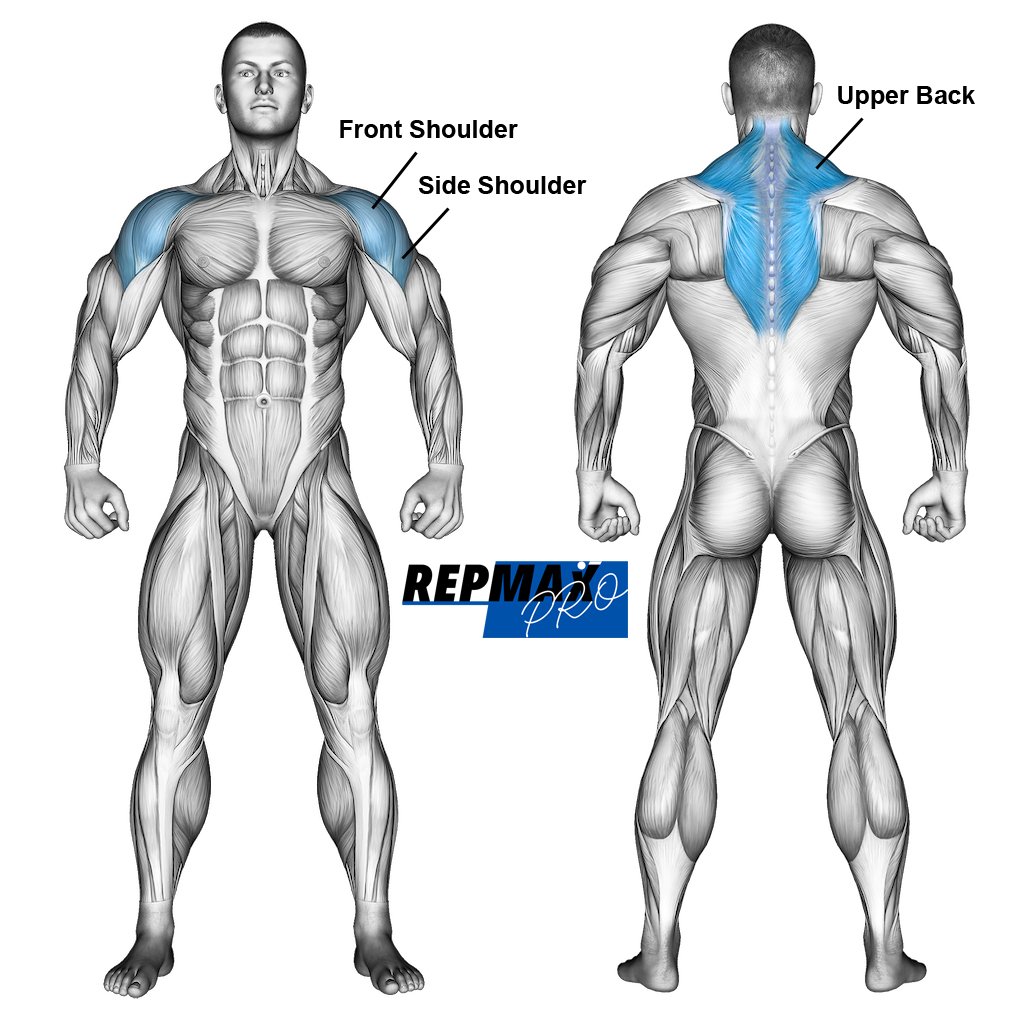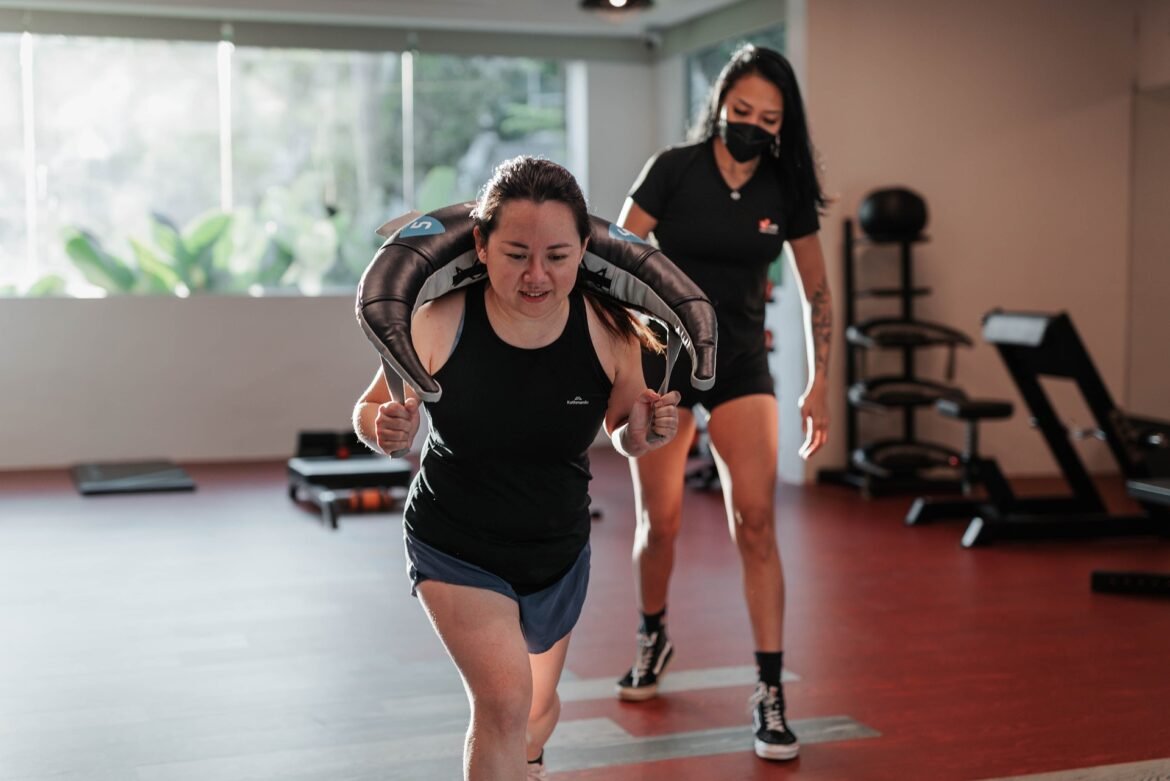Sled 45° Leg Press
The Sled 45° Leg Press is a compound lower-body exercise that targets the quadriceps, hamstrings, glutes, and calves. It is performed on a specialized machine where you press a weighted sled upward at a 45-degree angle using your legs. This exercise is excellent for building strength and muscle mass in the lower body without placing too much strain on the lower back or spine.
This is performed on a machine that allows you to push a weighted sled upward at a 45-degree angle using your legs. This exercise is a safer alternative to free-weight squats for many lifters because the back remains supported, and the movement is fixed. It is particularly useful for building lower body strength, improving leg muscle mass, and developing power.
Since it is a compound movement, it involves multiple joints and muscles, making it highly effective for overall leg development. However, it’s crucial to maintain proper form to avoid injury and maximize effectiveness.
Targeted Muscle Groups

Primary Muscles:
- Quadriceps: The main muscles activated during the leg press are the quadriceps (rectus femoris, vastus lateralis, vastus medialis, and vastus intermedius). They work to extend the knee as you press the sled upward.
Secondary Muscles:
- Glutes: The gluteus maximus is involved, particularly during the deep portion of the movement when the hips are flexed.
- Hamstrings: The hamstrings assist during the lowering phase of the leg press and work to control knee flexion.
- Calves (Soleus and Gastrocnemius): The calves are engaged to a lesser extent, especially during the final portion of the press when your feet push against the sled.
Equipment Needed
- 45° Leg Press Machine: This machine includes a padded seat for support, foot platforms for pressing, and a sled with adjustable weight plates. Most machines have safety pins or stoppers to prevent the sled from coming down too far.
- Weight Plates: If your leg press machine does not have a built-in weight stack, you will need weight plates to load the sled.
Step-by-Step Guide: How to Perform the Sled 45° Leg Press
Step 1: Set Up the Machine
- Adjust the Seat: Begin by adjusting the seat so that your back is supported and your knees are comfortably bent at about a 90-degree angle when your feet are placed on the platform.
- Position Your Feet: Place your feet shoulder-width apart on the platform with your toes pointing slightly outward. Your feet should be high enough so that when you lower the sled, your knees don’t go over your toes.

Muscles used in the military press.
Illustration credit © Aliaksandr Makatserchyk
Step 2: Engage the Sled
- Grip the Handles: Grab the side handles for stability. Push the sled up slightly to release the safety stoppers. Ensure you are in control of the weight before proceeding.
Step 3: Lower the Sled
- Lower the Weight Slowly: Inhale as you lower the sled by bending your knees. Lower the sled until your thighs are at a 90-degree angle with your torso, or until your knees reach about a 90-degree bend. Avoid letting your lower back lift off the pad.
Step 4: Press the Sled Upward
- Drive Through Your Heels: Exhale and push the sled upward using your heels and quadriceps. Fully extend your legs but avoid locking your knees at the top of the movement. Maintain tension on the muscles throughout the press.
Step 5: Repeat
- Repeat the Movement: Lower the sled again in a controlled manner and continue for the desired number of reps. Always ensure the movement is controlled and steady, both on the way down and up.
Recommended Reps and Sets
- Beginners: Start with 3 sets of 10-12 reps at a moderate weight to focus on mastering proper form and control.
- Intermediate: Aim for 3-4 sets of 8-10 reps with a heavier weight to increase muscle mass and strength.
- Advanced: Perform 4-5 sets of 6-8 reps using a challenging weight, focusing on power and hypertrophy.
Pro Tips for Success
- Keep Your Back Flat: Make sure your lower back stays pressed against the seat throughout the movement. Arching your back can lead to strain and injury.
- Drive Through the Heels: Pressing through your heels rather than your toes ensures more activation in the quadriceps and prevents unnecessary stress on the knees.
- Control the Descent: The lowering phase (eccentric) of the leg press is crucial for muscle growth. Lower the weight slowly and with control to maximize muscle activation.
- Avoid Locking the Knees: Fully extending your legs is important, but locking your knees at the top of the movement can place unnecessary stress on the joint and reduce the effectiveness of the exercise.
Common Mistakes to Avoid
- Incorrect Foot Placement: Placing your feet too low on the platform can cause your knees to travel too far forward over your toes, increasing the risk of knee injury.
- Using Too Much Weight: Loading the sled with more weight than you can handle compromises form and can lead to injury. Focus on controlled, quality reps instead of loading too much weight.
- Shallow Range of Motion: Failing to lower the sled to a 90-degree angle at the knees reduces the exercise’s effectiveness. Ensure you’re using a full range of motion to maximize gains.
- Not Using Safety Stoppers: Always engage the safety stoppers before starting the exercise to prevent the sled from coming down uncontrollably if you lose strength mid-set.
The Sled 45° Leg Press is a highly effective lower-body exercise that strengthens and tones the quadriceps, hamstrings, glutes, and calves. By performing this exercise with proper form, using appropriate weight, and following a well-rounded routine, you can build muscle, increase lower body strength, and improve athletic performance. Whether you’re a beginner or an advanced lifter, the leg press can be an essential part of your workout regimen. Just remember to focus on control, avoid common mistakes, and progressively increase weight as you get stronger.
